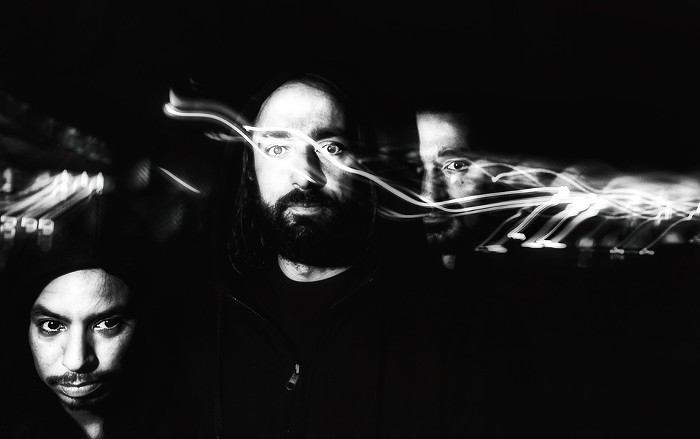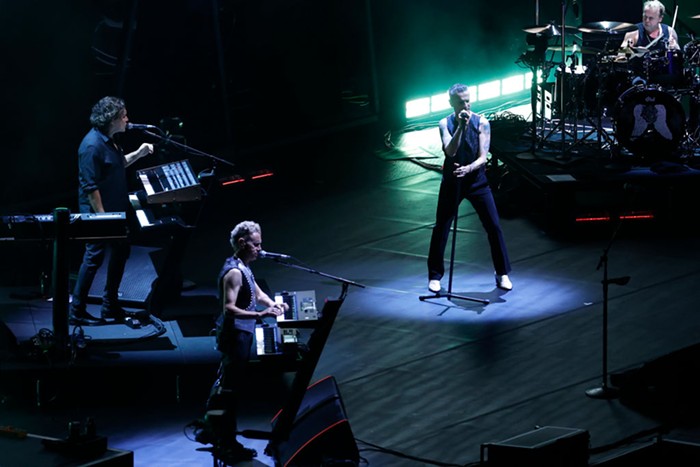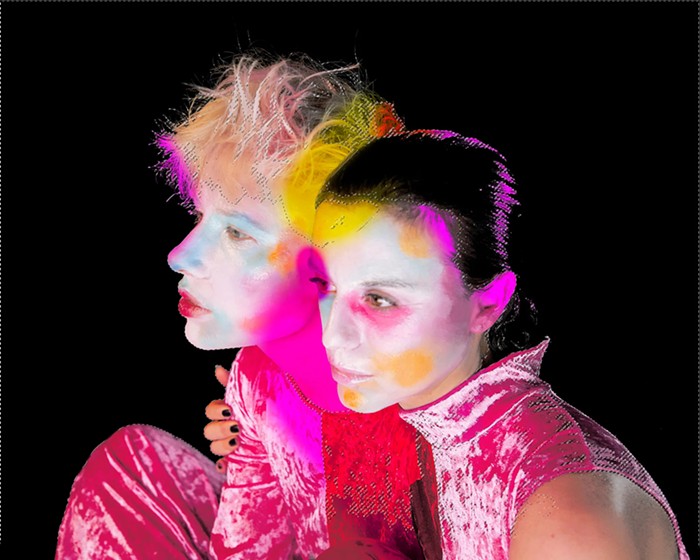But they've never played a lick of music together.
The "group" in question is the crew of Live Eye TV, a local public-access music program whose first episode, featuring the Coachwhips, Kinski, the Cripples, Kill Me Tomorrow, and Some by Sea, aired in mid-June. With artful yet professional camera work and editing, engaging interviews, chaotically hilarious interludes, and upcoming episodes featuring a jaw-dropping roster of both national and local acts from Mission of Burma and the MC5 to the Gossip and the Girls, Live Eye TV is already showing potential as a new catalyst in the Seattle independent music and film community. (Future plans include airing actual music videos from bands like the Thermals, the Fitness, and the Soviettes, provided by indie distributor Hip Video.)
"Music has always been my main source of inspiration," says Live Eye founder, cameraman, and editor John Gow. "I was thinking of trying to develop some sort of Internet fanzine, and somewhere along the line I got introduced to Seattle Community Access Network [SCAN]. [Television] actually seemed like a better idea because it seemed more accessible to people. I liked the fact that SCAN is actually the second-largest cable-access market in the country, which seemed like a huge potential."
The 35-year-old Chicago native spent his formative years writing for fanzines and small publications and finally came to Seattle in 2000, drawn by its thriving music and arts scene. Here he became involved in the local film community and soon found himself wanting to create something that could bridge the gap into the music scene.
"One of the first things that I filmed was a show last year at the Graceland with Out Hud and !!!," remembers Gow. "The lead singer of Out Hud performed this song so well, I think even he was kind of amazed by his performance, and he just looked at me and said, 'Did you get that on film?' and I was like, 'Yeah! I did!'"
Gow edited the Out Hud footage and showed it to friends who had expressed some interest in his idea for a local-music public-access show. Two early contributors were Karey Gaylord and Mario Barbetta, who primarily function as camera operators as well as Live Eye's art and communications directors, respectively.
"I had been taping and producing videos for my friends' bands for maybe half a year or so prior to Live Eye," says Gaylord. "When John brought the idea up, I was excited because I knew he was a talented filmmaker and had the gear and skills to produce something way more professional than anything I could do with my little JVC and amateur editing program."
Gow edits the unique styles of each cameraperson--from Gaylord's staccato, retina-burned audience POV work to fellow Live Eye mainstay Mike Walker's vivid, professional, onstage close-ups and crowd shots--and combines them into a half-hour-long program that, while still working out the kinks, contains a compellingly raw vibrancy.
The cable-access medium is one that's proven to be a big booster in other cities like San Francisco, where Virgil Porter's (now defunct) Burn My Eye program provided a time capsule of the scene living in and moving through that city. And here in Seattle, genre-specific hiphop shows like The Coolout Network, Hiphop 101, and Music Inner City put a lens on that community. Still, television remains an underutilized outlet locally.
"I think that there's a big huge hole as far as our media scene goes in that very few people are doing video," says Gaylord. "[Seattle] definitely has the print media covered, KEXP is doing a great job with local and touring acts, but video is the most all-encompassing way to present a band, and with the distribution of that, I think our show could be something more than cable. I'd love to have it put out on CD-R so that everyone could pick it up as regularly as they would [a print media source]."
New contributor Mike Prevette says Live Eye aims to present a broad spectrum of artists, from the Vera Project's MLK Hip Hop night to national rock legends like the MC5: "I don't think that any bands have been picked [for the show] because of their current hype. They're being picked because they're solid bands with a good following and put on shows that people want to see. I don't want it portrayed as being the 'hipster friend circle,' like any media thing in Seattle seems to become, because, I mean, we're the AV club gone rock 'n' roll."
Gaylord says there's an open casting call to get involved as a Live Eye volunteer. "The random group of people who have helped out with one show or another have created our connections to one group or another, so it's an open-door policy."
In the future, Gow envisions the show growing beyond himself and his staff into even more of a community outlet. "I initially set a personal goal to make 12 shows and that might take me a year and a half to do realistically. I'd hope that the show would be well-established enough [by then] that I could sort of pass the mantle on to other people and keep it going," he says. "I hope that because there are so many people interested in learning how to use the equipment, and there's such a lively scene, that this is something that stays around in Seattle for a while."
Episode two of Live Eye TV, featuring Mission of Burma, the Thermals, the Intelligence, and these Arms Are Snakes, airs Thursday, August 19, at 8:30 p.m. on SCAN 77/29. For more information about Live Eye, plus streaming video of bonus material not aired on SCAN, go to www.liveeyetv.org. To find out how to get involved with SCAN, visit www.scantv.org.


















